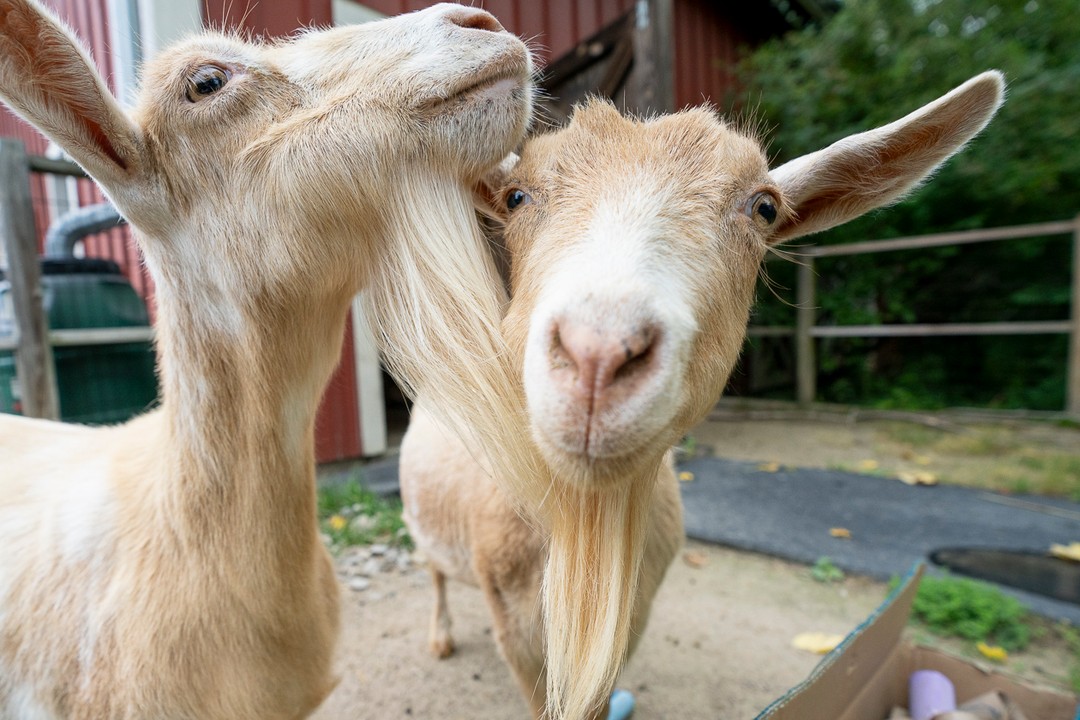- Explore the significance of farm animals in agricultural and educational settings.
- Learn about the Columbus Zoo’s initiative to connect urban audiences with farm animals.
- Discover the various species housed at The Barn within the North America Trek region.
- Understand the broader impact of such exhibits on wildlife conservation and public awareness.
- Celebrate National Farm Animals Day by understanding the role of farm animals in cultural heritage.
Old McDonald had a farm—a classic nursery rhyme that has sparked the imaginations of young listeners for generations, painting vivid pictures of barn life complete with its ensemble of charming animals. But what if you could experience some of this bucolic charm right in the urban setting of the Columbus Zoo? Tucked away in the North America Trek region, The Barn sponsored by Bob Evans is a portal into the warm world of farm life. It offers visitors a chance to engage with animals traditionally found on farms, and learn about their roles in agriculture, education, and conservation.
The Columbus Zoo’s effort to build interactions between urban populations and farm animals serves an important purpose. Farm animals, which have been increasingly distanced from urban life, play critical roles in our food systems, economies, and cultural traditions. Establishing a venue for people to interact with these creatures fosters understanding and appreciation—key components of promoting sustainable agriculture and conservation awareness. As part of this initiative, The Barn is home to a variety of animals common to North American farms, such as goats, sheep, and cows—all easily accessible for families visiting the zoo.
Let’s look at the goats and sheep, which are some of the more personable residents of The Barn. Goats, known for their playful temperaments and insatiable curiosity, offer visitors a chance to learn about their usefulness in agriculture. Around the world, goats are valued for their milk, meat, and ability to clear vegetation—versatile animals contributing to both agriculture and ecological management. Sheep, on the other hand, are incredibly important for their wool. Understanding the life cycles and care requirements of sheep, including shearing, provides insights into the textile industries and stimulates conversations about sustainable clothing materials.
The cows residing at The Barn are quintessential representatives of American farming. They serve as a direct link to discussions about dairy production, beef farming, and the significance of ethical animal husbandry. By observing these gentle giants up close, visitors can appreciate not only their size and demeanor but also learn about the processes involved in maintaining a healthy cattle farm. This kind of firsthand experience underscores the significance of empathy and responsibility within the agricultural sector.
Bridging the gap between urban populations and agricultural realities isn’t just about showcasing farm animals as exhibits—it’s about engendering a greater connection to the environment and the materials we often take for granted. Farm exhibits like those at The Barn play a crucial role in wildlife conservation and education by modeling practices that promote biodiversity and sustainable living. By illustrating the synergy between farm animals and ecological systems, visitors can comprehend the broader implications of conservation.
National Farm Animals Day offers an opportune moment to reflect on how farm animals have shaped human culture and history. These animals have not only provided resources but also contributed to the development of societies. By celebrating their roles in our shared heritage, institutions like the Columbus Zoo stimulate discussions on sustainable futures and mindful stewardship of our natural world. Sharing this knowledge enhances public awareness and fosters an appreciation for traditional farming practices adapted to contemporary needs.
Thus, Old McDonald’s nursery rhyme transcends its role as a simple song to become a lens through which we can examine the intersection of education, conservation, and cultural heritage. While many might recognize the song for its playful repetition and catchy rhythm, its underlying themes resonate with deeper questions about how we value and interact with the other living beings that share our planet. The Columbus Zoo’s farm animal exhibits remind us that these narratives are very much alive, evolving with our growing understanding of animal welfare and environmental conservation. Regular interactions with these animals not only preserve their stories but also invite us to be active participants in nurturing their continued existence.
*****
Source Description
Old McDonald had a farm… but did you know you can meet farm animals right here at the Columbus Zoo too?
Tucked away in the North America Trek region, The @bobevansgrocery The Barn is home to some of the most lovable farm animals around including our playful goats and sheep and gentle cows! Guests of all ages can step inside and meet these barnyard buddies up close—giving them a pet, a scratch, or just a friendly “hello!”
While Old McDonald may have had a farm, we have a whole barn of fuzzy, four-legged friends just waiting to make your visit even more special when the North America Trek region re-opens later this spring. On National Farm Animals Day, enjoy these precious photos of our animals at The Barn who can’t wait to see you soon!


